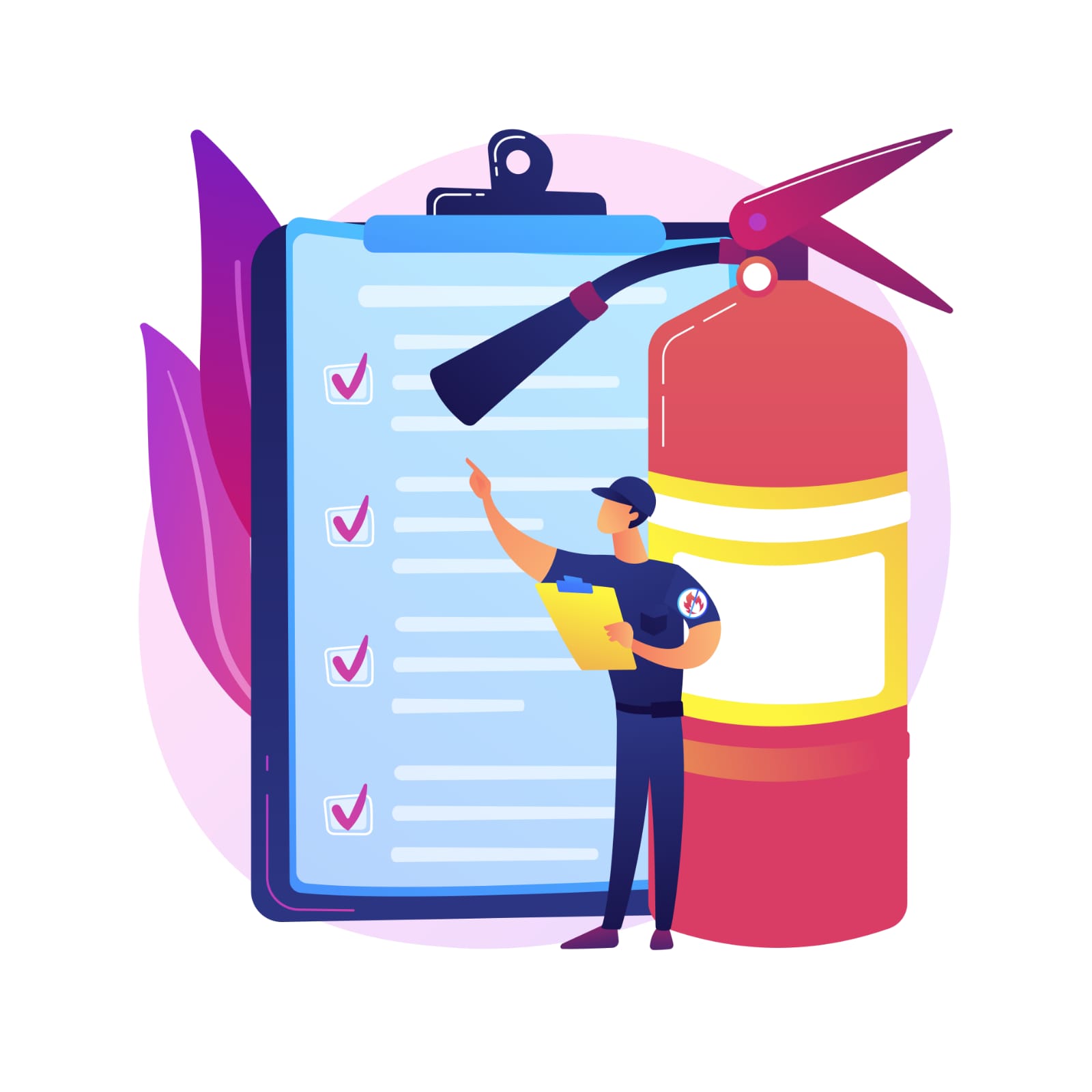
Annual Fire Inspection Checklist in Ontario What You Need to Know

Fire can flare anytime and require the immediate attention of a fire department. This emphasizes the need for comprehensive fire safety measures that can prevent the fire. Many countries around the world are acknowledging the seriousness of this issue. The best technique to deal with a fire is to prevent it. For an annual fire inspection, a comprehensive checklist is a must-have that can help you carry out the examination systematically. In this blog, we have designed a useful checklist focusing on the fundamentals of fire inspection and safety that will help you perform annual fire inspections effectively. Let’s have a look at the complete checklist of fire inspection below;
Checklist #1: Fire Safety Equipment
Fire inspection covers examination of all safety equipment including fire alarms, smoke detectors, sprinklers, and extinguishers. All these fire safety and prevention equipment play a vital role in safeguarding lives and property in the event of a fire. It is therefore essential to keep them working in good condition. The checklist under fire safety equipment covers the following areas;
Checklist#2: Evacuation Routes
This is the second most important checklist under semi-annual fire inspection covers the checking of all exit routes and hallways. This inspection ensures that people don’t face any kind of obstacles when they need to exit the building in case of a fire emergency.
- The inspection team ensures that there must be at least two exit routes.
- Walkways and aisles are free of obstructions.
- The inspector makes sure that the exit doors are wide enough, at least 36 inches, and can be easily opened in case of emergency.
- The fire equipment is accessible and easy to use.
- The hallways and fire exit doors are lit with clear marks.
Checklist #3: Compliance with Fire Safety Regulations
Checklist #3: Compliance with Fire Safety Regulations As we know, violation of fire safety codes can lead to legal consequences such as arrest, penalties, and fines. This section of the annual fire inspection covers the assessment of safety measures in the facility to ensure they are capable of preventing fires. The other aspects of compliance with fire safety regulations include;
- Make sure to keep all combustible materials in safe places (fireproof cabinet).
- Each building has occupancy limits; the inspection team will monitor if the number of people exceeds the limit at any time.
- The use of a multi-plug adapter can also lead to ignition. The inspection team will check if the electrical panels and sockets are overloaded or not.
- Ensuring there are no flammable materials near any electrical panel.
Checklist #3: Compliance with Fire Safety Regulations
Checklist #3: Compliance with Fire Safety Regulations As we know, violation of fire safety codes can lead to legal consequences such as arrest, penalties, and fines. This section of the annual fire inspection covers the assessment of safety measures in the facility to ensure they are capable of preventing fires. The other aspects of compliance with fire safety regulations include;
- Make sure to keep all combustible materials in safe places (fireproof cabinet).
- Each building has occupancy limits; the inspection team will monitor if the number of people exceeds the limit at any time.
- The use of a multi-plug adapter can also lead to ignition. The inspection team will check if the electrical panels and sockets are overloaded or not.
- Ensuring there are no flammable materials near any electrical panel.
Importance of Annual Fire Inspection
According to sections 21 (1) and 21 (2) of the Fire Protection and Prevention Act (FPPA), the fire department inspector can inspect and assess the fire safety of any land and business premises. If any fire safety issues are found, the inspector has the authority to issue an order to the manager or owner of the land and take necessary actions to ensure fire safety. No matter how effective and advanced the fire safety system is in place, if there is no regular inspection and maintenance, you cannot guarantee 100% safety against fire. A fire inspection is the key ingredient that makes a fire safety system powerful and reliable. Here are some of the most potent reasons why annual fire inspection is important;